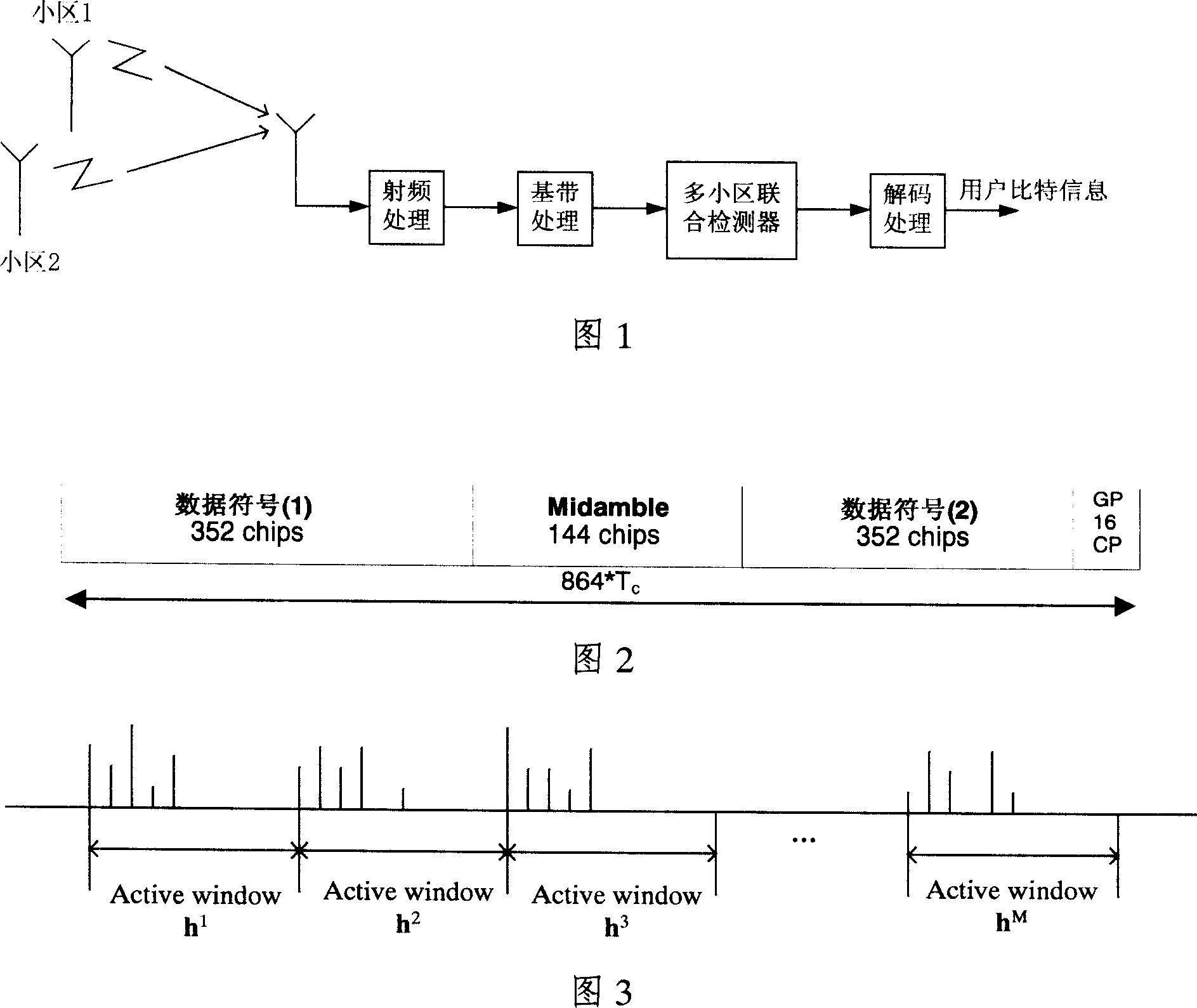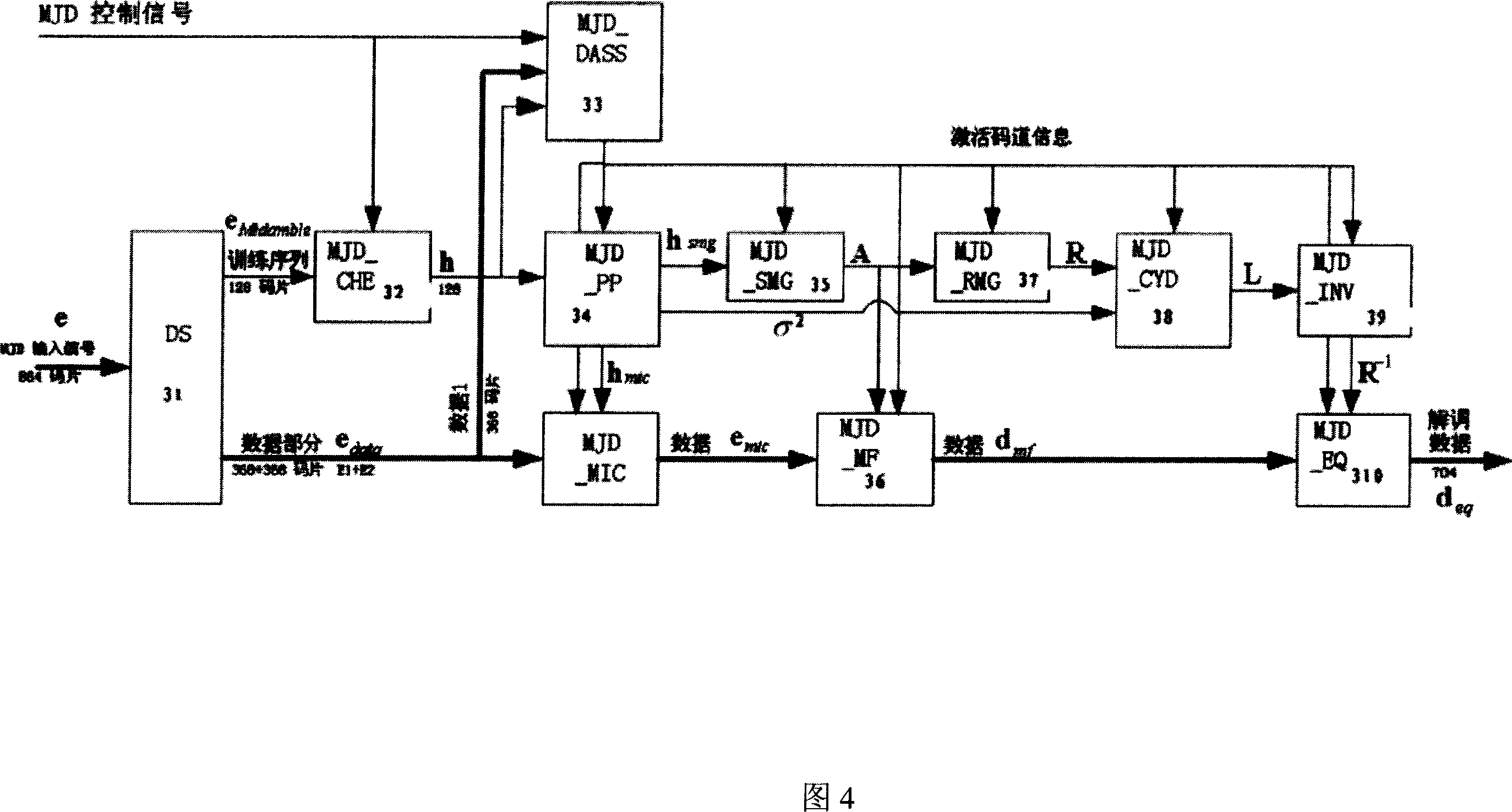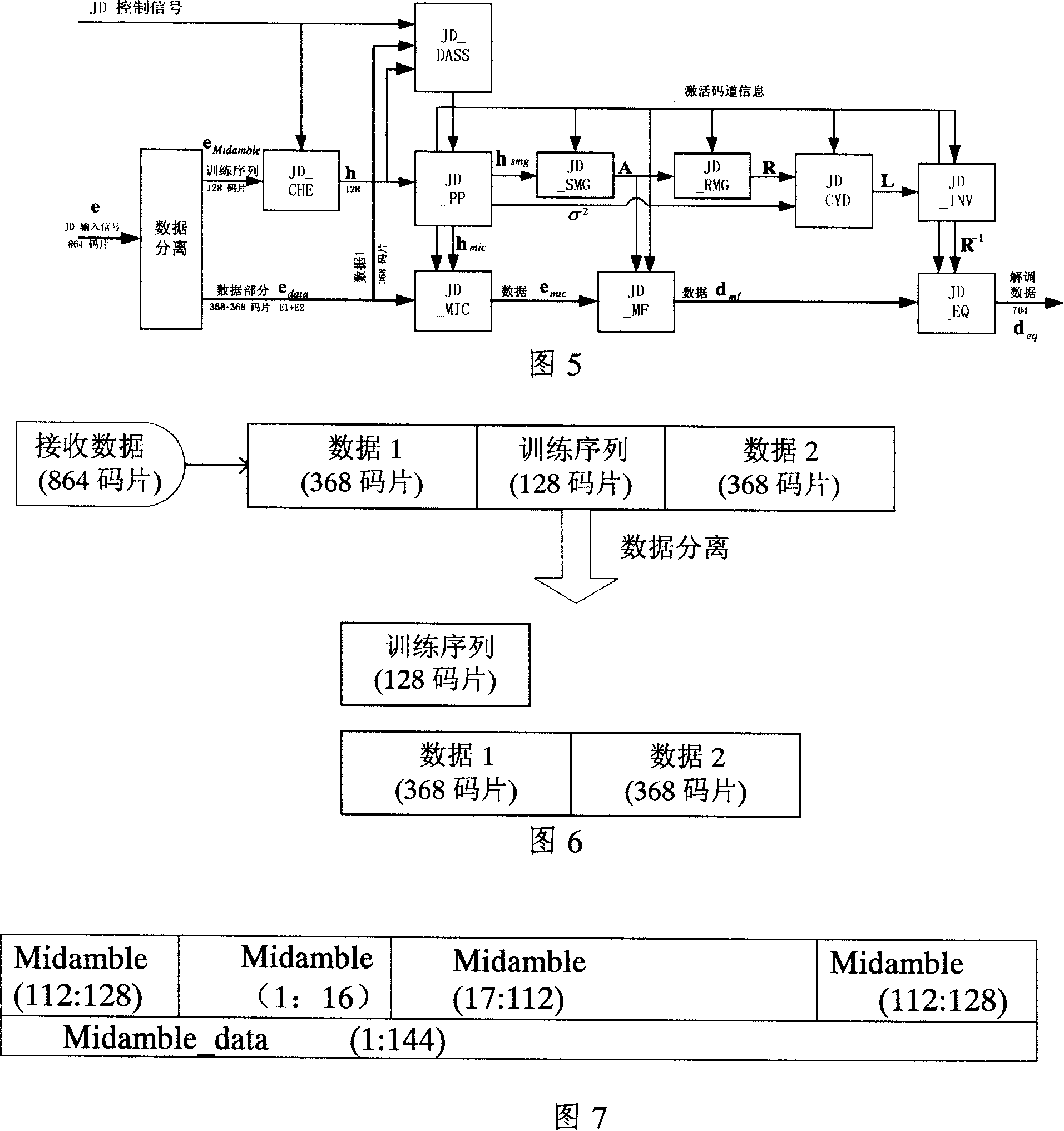Receiving device and method for TD-SCDMA system
A TD-SCDMA and receiving device technology, applied in the field of wireless communication, can solve problems such as large influence, interference demodulation results, and difficult signal demodulation, and achieve the effect of excellent performance
- Summary
- Abstract
- Description
- Claims
- Application Information
AI Technical Summary
Problems solved by technology
Method used
Image
Examples
Embodiment Construction
[0019] The reception of the same-frequency signal in TD-SCDMA is shown in Figure 1. The signal of the same-frequency cell reaches the terminal antenna after spatial mixing, and the wireless signal is sent to the multi-cell joint detector for joint detection after radio frequency and baseband processing. Multi-cell joint detection The decoder combines the signals of multiple same-frequency cells for interference elimination and joint demodulation, and finally sends the user's soft demodulation information to the decoder to obtain the expected information bits.
[0020] The joint detection process of a single cell and multiple cells is basically similar, but there are differences in the actual module processing. The joint detection process of a single cell is firstly combined with the joint detection process of a single cell to illustrate the joint detection process of multiple cells. The joint detection process of a single cell is shown in Figure 5, and the joint detection proce...
PUM
 Login to View More
Login to View More Abstract
Description
Claims
Application Information
 Login to View More
Login to View More - R&D
- Intellectual Property
- Life Sciences
- Materials
- Tech Scout
- Unparalleled Data Quality
- Higher Quality Content
- 60% Fewer Hallucinations
Browse by: Latest US Patents, China's latest patents, Technical Efficacy Thesaurus, Application Domain, Technology Topic, Popular Technical Reports.
© 2025 PatSnap. All rights reserved.Legal|Privacy policy|Modern Slavery Act Transparency Statement|Sitemap|About US| Contact US: help@patsnap.com



